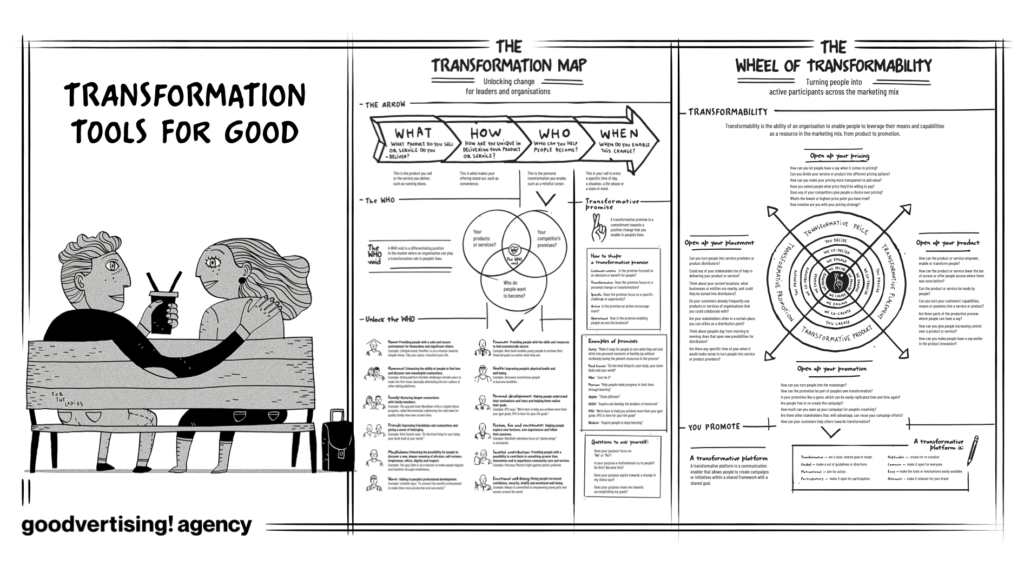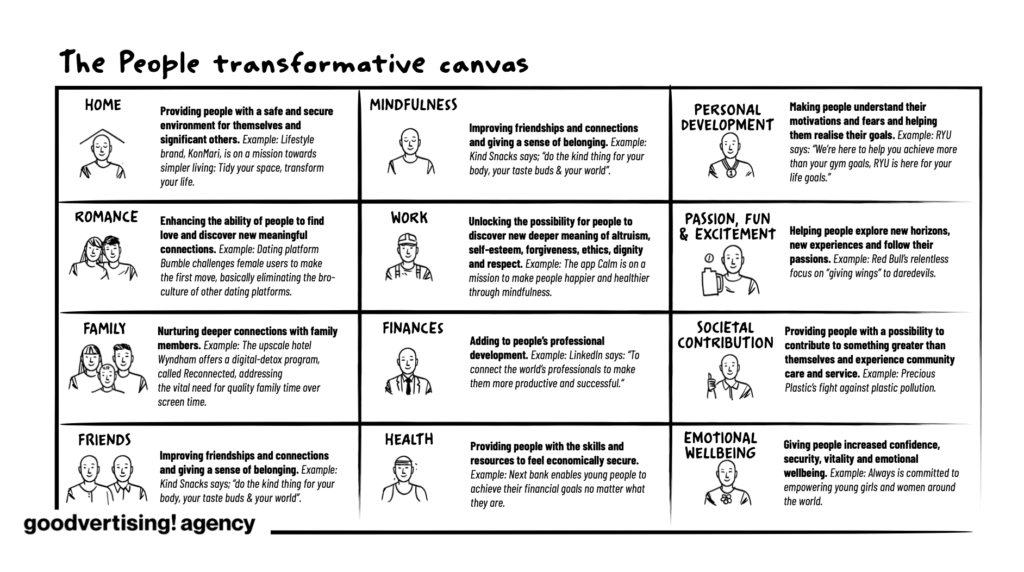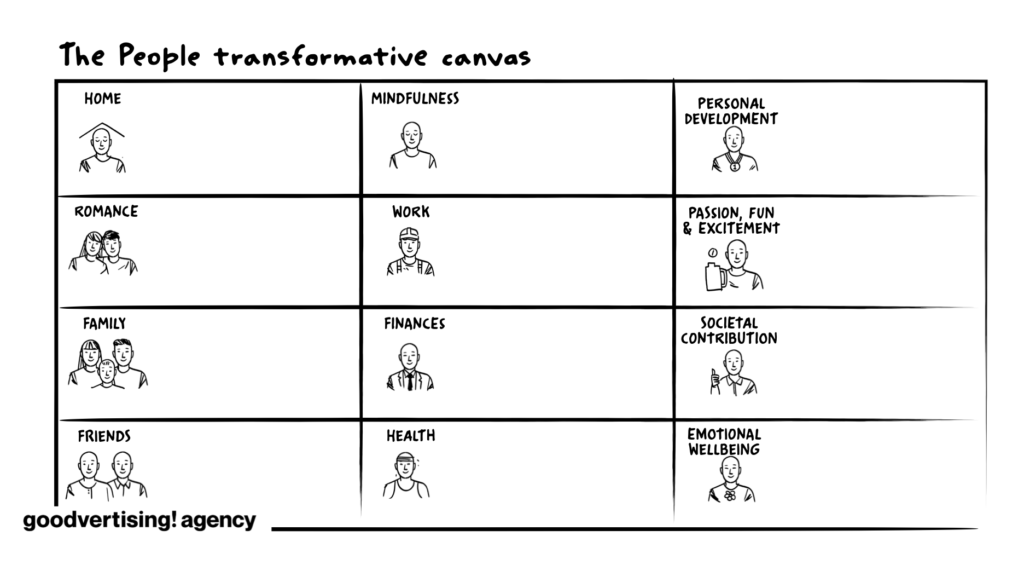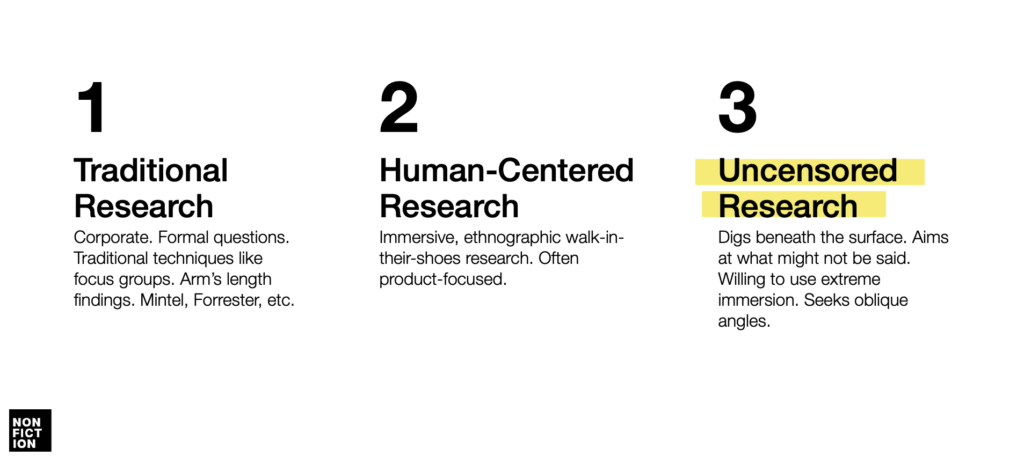
Before moving into the smart building space, I was chief advacocy officer for author, keynote speaker self-proclaimed ‘post-purpose’ preacher Thomas Kolster and his Goodvertising agency. That was also a ‘market engagement’ role , which included helping develop his online master class that accompanied his The Hero Trap: How to Win in a Post-Purpose Market by Putting People in Charge book from 2020 that I contributed to (you can get free digest version from here).
That project included prototyping the master class with cohort of post-graduate students at the Amsterdam Fashion Institute as part of integrating it into their masters programme. This included turning many of the learning materials into a set of canvas-like tools that could be used as part of project process, which were subsequently made freely available, e.g. the People Transformative Canvas and explanation below:


Thomas’s book and accompanying tools are more consumer orientated, but the reason for mention these is becasuse I spoke to Rob Murchison at Intelligent Buildings, LLC as part my of my research into retrofitting this year. He explained that they had a library of around 500 use cases for smart buildings and that being something that AI could potential interpret for specification purposes.
But subsequently I attended the International WELL Building Institute (IWBI) Regional Summit in London. What struck me as interesting was how the event was more people-focused and rarely mentioned technology at all. I found the presentation by Leeman‘s Deputy CEO Alison English about their Workplace Reset research fascinating and particularly the Minimum Viable Office concept.
I like the ‘Lean Start-up‘ framing of the Minimum Viable Office and that suggesting it being something that can be built opon and evolved iteratively, i.e. through more human-centred design thinking, UX and agile methodologies.
But I also liked what Alison had to say about (Office) Form follows Function follows Purpose. And not least because of the way she framed Purpose, not around starting with some Simon Sinek kind of higher or social purpose ‘Why’ (see more here), but more simply around what is an office for now post-pandemic, i.e. what can and perhaps should be done there that can’t be done somewhere else like at home.
These seems more akin the the more people-centric way that Thomas was trying to reframe purpose to help brands avoid becoming the heroes in their own stories and avoid navel gazing about the worthy nature of their organisational existence beyond profit (having got caught in arms race to ‘out purose’ their competitors). And also how author and ex-Heidrick & Struggles consultant Colin Price explains that the accelerating of business performance is in part more pragmatically achieved by having a purpose based on a customer need:
As the lines between smart buildings and smart offices become increasingly blurred, I wonder whether AI’s reliance on historical data is enough for their specification based on existing library of use cases. Given the increasing number of those involved in smart buildings and where lines blur into other areas of who is occupying them, then it strikes me that more hands on and immersive research is also required – particularly for deeper insights.
There’s probably another post to go into Big vs Thick Data (Thick Description from social sciences and related fields, and related ‘uncensored research’ methodolgy that digs beneath the surface used by former colleagues Ben Zeidler and Gunny Scarfo at Non-Fiction Research:

In the meantime, I will simply highlight this Google Talk by co-founders of ReD Associates on why so much technology fails:
Apologies for my meandering, but I am sharing the above because I can’t help think that there maybe a canvas-type tool, or set of them, for exploring the needs and challenges of different stakeholders in smart buildings, i.e. along the same lines as the way Strategyzer‘s Value Proposition Canvas tool focuses on Customer Jobs-to-be-done, along with their pains and gains to help ensure product-market fit (see more here). And the means of exploring those being more likely to yield deeper insights through ‘uncensored’ type research than the interrogation of AI/Big Data analysis – particularly if your challenge is occupany related not just energy efficiency.
From a technology point of view, I think something along these lines can better explain the purpose of the technology in terms of the problem it helps solve and for whom (see more here).



